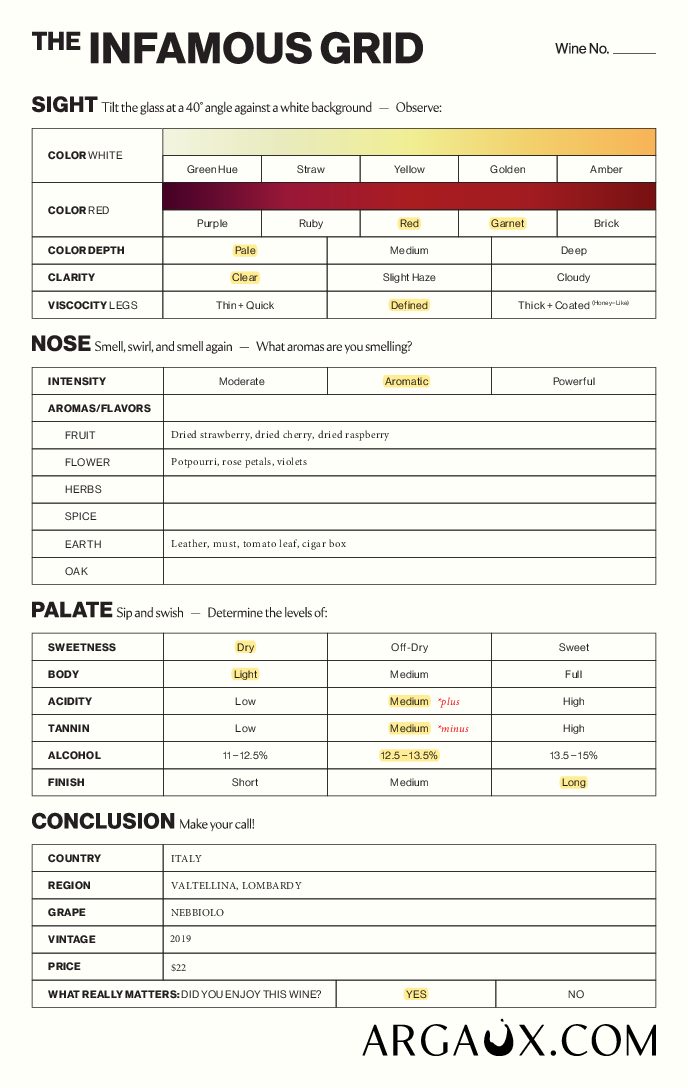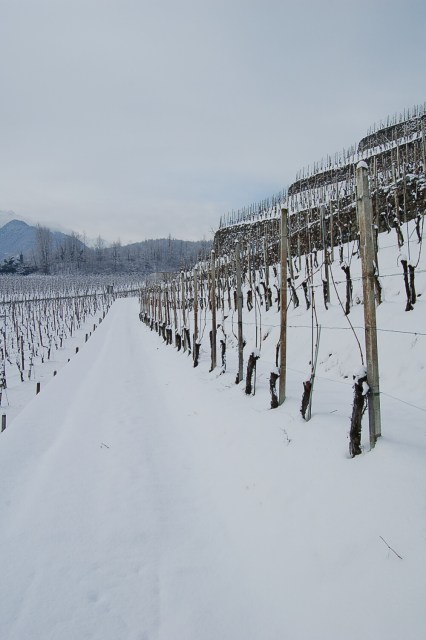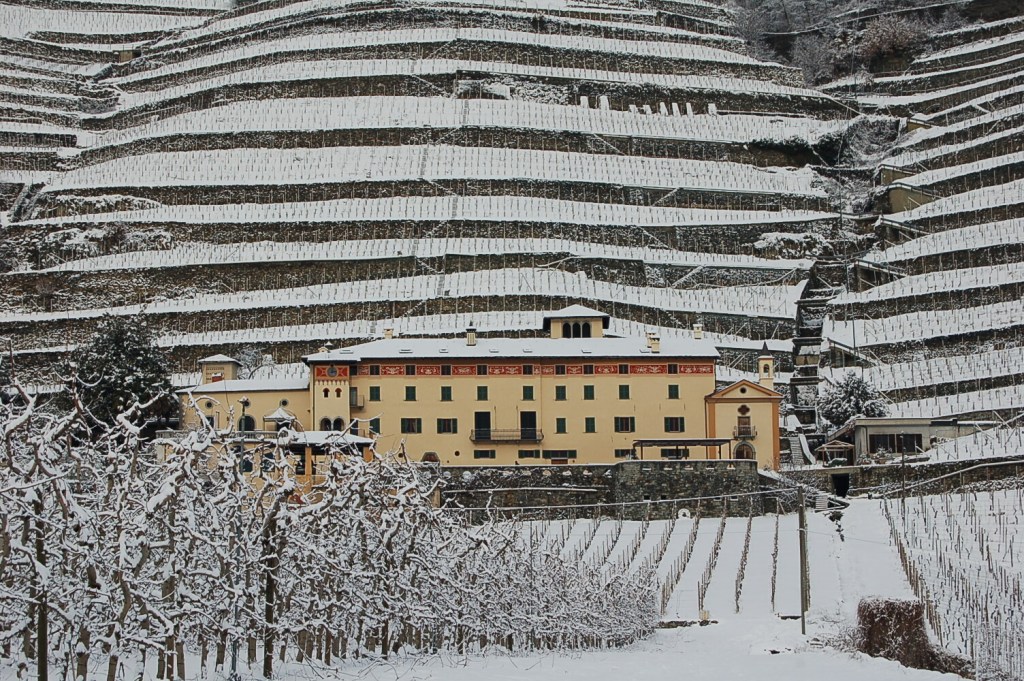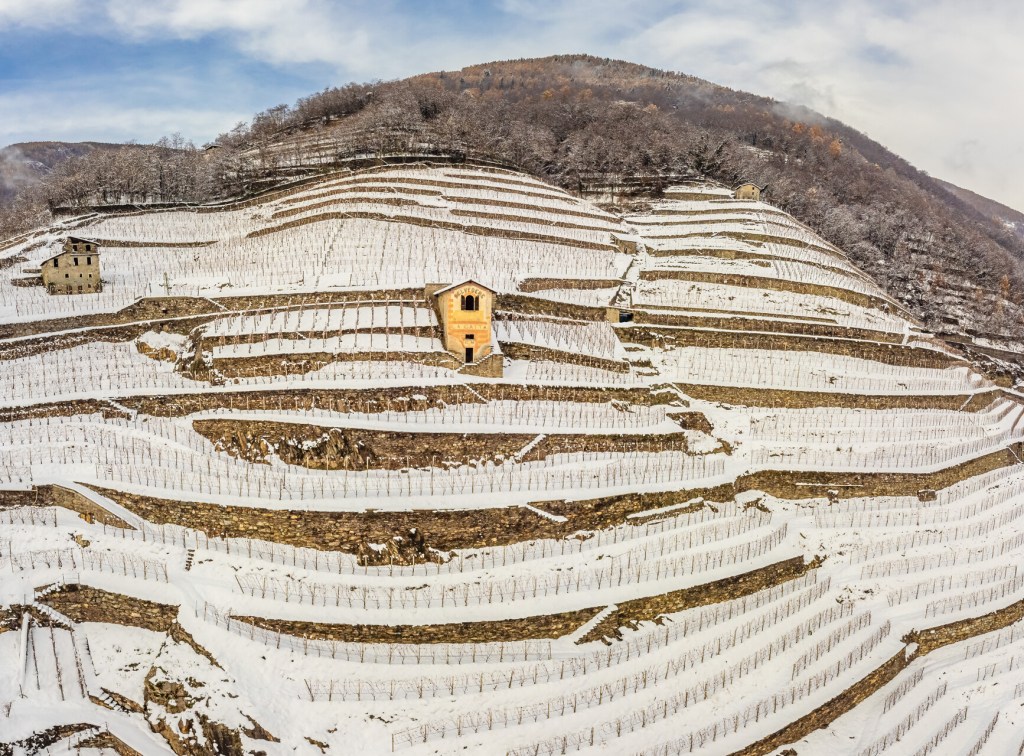2019 Casa Vinicola Triacca ‘Gaux Dopo’ Nebbiolo
This Alpine Nebbiolo is energetic, zippy, and remarkably fresh. The stainless steel fermentation maintains the wine’s bright fruit character, floral quality, and natural suppleness.
Sustainable farming practices and only 100 cases produced!
$22.00
Out of stock
Pairs with
The “La Gatta” estate was originally built in the 1500s as a Dominican monastery and was later purchased as a summer home for the aristocratic de Gatti family, from which the name derives. The Triacca family acquired the old monastery in 1969, which is surrounded by 13 hectares of vigorous vines grown on the steep hillsides of the Italian Alps. In 1987, Domenico Triacca acquired 2,000 square meters of vineyards in Valgella, one of the most highly sought after vineyard areas in Valtellina and built himself a small cellar to start producing and aging wines from his own vineyards. Today, Lucca Triacca runs the estate and is known as one of the most innovative Valtellina producers.
Valtellina lies in an Alpine valley in the northern part of the country in the Lombardy region. It actually forms part of the border between Italy and Switzerland and historically has been Swiss and Austrian territory before becoming part of Italy in 1859. The area benefits from a cool, mountain climate, though ‘La Breva,’ a gentle wind that originates over Lake Como, moves warm air into the valley and helps promote pollination in the spring. The vineyards lie on extremely steep slopes and tiny terraces (similar to the Mosel or Alto Adige) requiring it all to be worked by hand. Some suggest that Nebbiolo may have even originated in Valtellina! Today, it is known for its bright, cherry-scented Nebbiolo, known here as Chiavennasca (after the nearby town of Chiavenna).
“Nebbiolo from Valtellina has always been one of my favorite expressions of this grape. It’s Alpine wine; a much lighter and fresher version of your typical Nebbiolo from Piedmont that you might be more familiar with. They are high acid, food-friendly wines that are often significantly more affordable than your average Barolo. These wines are great with good company, a cheese & charcuterie plate, and some light pasta.” – Lexi Jones, Director of Imports
Related Items
-
2022 Clos La Coutale Cahors Malbec
$22.00Cahors is the sneakily sophisticated but humbler country cousin of Bordeaux. It’s the ancestral home of Malbec and it captures everything that makes this estate beloved by sommeliers, importers, and everyday drinkers alike: depth without heaviness, structure without austerity, and earthy charm wrapped in juicy fruit. This is one of our favorite party picks.
Organic farming practices and aged for a year in French oak barrels.
-
2021 Tenuta di Castellaro ‘Ypsilon’ Terre Siciliane Rosso
$28.00Born from the volcanic soils of Lipari Island, Ypsilon is a red blend that is shaped by the island’s sun-drenched days and cool, breezy nights. It is a blend of Corinto Nero, Nero d’Avola, and Alicante grapes cultivated as bush vines on the Castellaro plain, 350 meters above the Aeolian sea. It’s a true island wine, a taste of the wild, untamed beauty just north of Sicily.
Organic farming practices, hand-harvested, native yeast fermentation, no fining, vegan.
-
2022 Domaine Santa Duc ‘Les Quatre Terres’ Côtes-du-Rhône Rouge
$32.00The wines from these parcels give off lovely floral aromas with notes of red and black fruit, and that infamous Southern Rhône garrigue. The 18 months spent in oak Stockinger foudres, and terracotta amphorae pave way for a pure, elegant tannic structure with the most incredible silky mouthfeel that leaves your tastebuds begging for more.
Ecocert-certified organic and Demeter-certified biodynamic, 40-year old vines, hand-harvested, unfined and unfiltered at bottling.
-
2023 Hundred Suns ‘Old Eight Cut’ Willamette Valley Pinot Noir
$40.00The Old Eight Cut refers to a diamond cut dating back to the 1400s using simple tools and few cuts to enhance the natural brilliance of the stone without disguising its true nature.
The first sip shows a center point of sweetness that is buttressed by dark red fruit, ripe tannins and a hint of nori that give the wine a serious edge. With air and time, the sappy spicy notes that come from partial whole cluster fermentation resonate on the finish, making this wine one with incredible depth that will drink well now and over the next 10 years.
Sustainable farming practices, dry-farmed, native yeast and partial whole cluster fermentation











